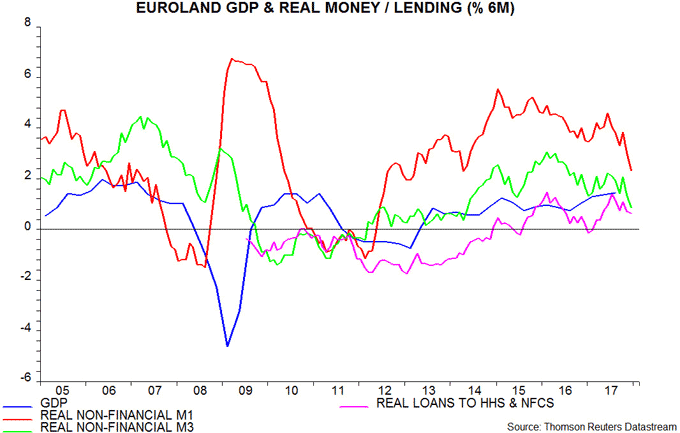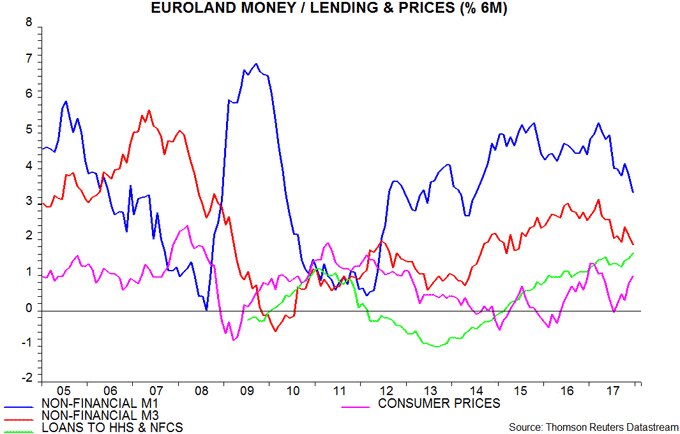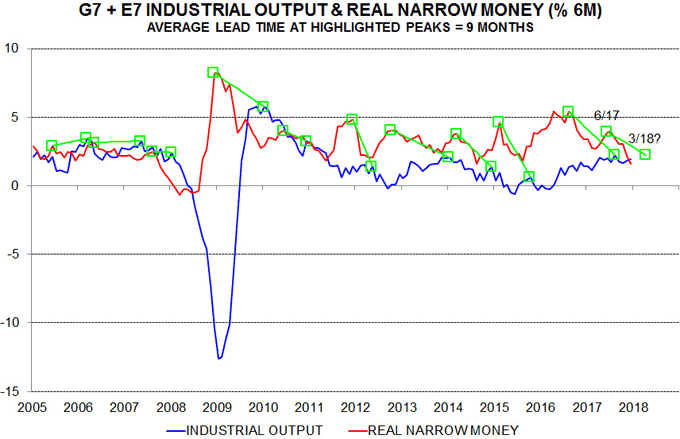Global money trends still weakening
Global policy-makers are trumpeting “synchronised” economic growth. They should, instead, be worrying about synchronised monetary weakness, which is ringing alarm bells about economic prospects for later in 2018.
Euroland money numbers for December released today were soft. Six-month growth of real narrow money – defined as non-financial M1 deflated by consumer prices – fell further to its lowest level since 2014. Real broad money growth also declined sharply – see first chart.

The real money slowdown reflects both lower nominal monetary expansion and a rise in six-month inflation. Six-month growth of nominal narrow money was also the lowest since 2014 last month – second chart.

Six-month real narrow money growth also fell further in December in the US, China and Japan. Our “global” measure covering the G7 and seven large emerging economies appears to have reached the bottom of its range since 2009 – third chart*.

Global six-month real narrow money growth peaked most recently in June / July 2017 and has led turning points in industrial output growth by nine months on average in recent years (and over the longer term). This suggests a loss of economic momentum in the second quarter of 2018 extending well into the second half.
Weaker global monetary trends reflect significant US and Chinese policy tightening since late 2016. QE tapering by the ECB and BoJ, meanwhile, has slowed capital outflows and boosted the euro and yen – earlier currency falls played a key role in generating current Euroland / Japanese economic “strength”.
Will US tax cuts head off or mitigate a loss of global economic momentum? A significant stimulatory impact would probably be signalled by a rebound in US narrow money growth in early 2018. A negative view will be maintained here barring such a reversal.
*December monetary figures are available for countries accounting for 83% of the G7 plus E7 aggregate.

Reader Comments